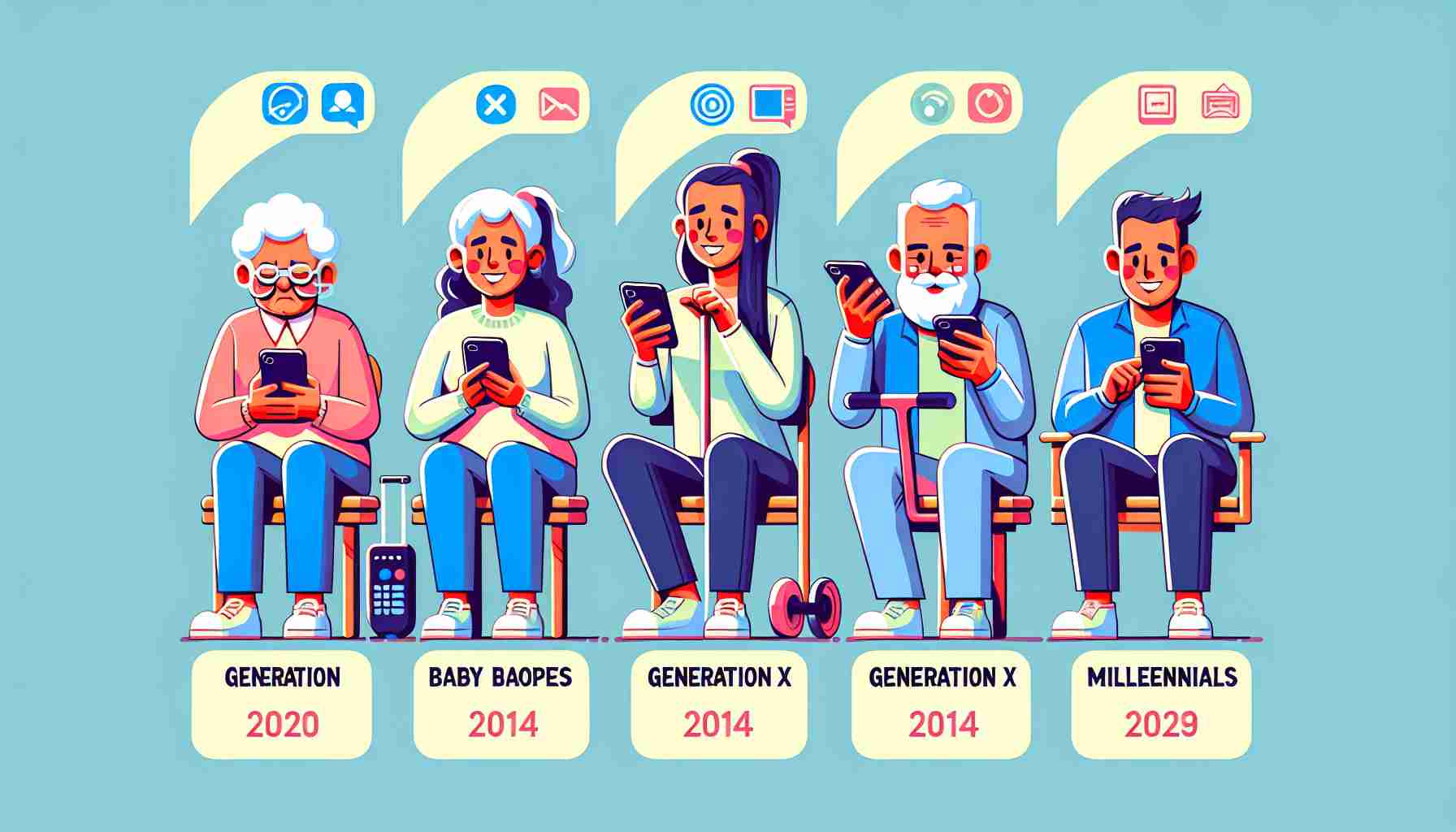Identifying Generational Texting Patterns
Experts are now looking into various non-verbal cues, like the way one types on a smartphone, as indicators of generational belonging. The subtle differences in texting techniques have become a source of insight into the digital behaviors across age groups.
Millennials to Gen Z: Evolution of Typing Speed
Observations have shown that Millennials typically type using both thumbs, often incorporating swipe functionality, while their younger counterparts in Generation Z are noted for executing the same method, just at a faster pace.
X Marks the Spot: One Finger Typing for Older Generations
When it comes to Generation X and the Baby Boomers, the trend shifts towards one-finger typing, frequently using the index finger, especially as they advance in age.
The Evolution of Mobile Typing
Tracing back to mobile communication’s early days, Nokia released the 9000i Communicator in 1993, pioneering text messaging by requiring multiple button presses for a single letter. By 1999, the introduction of BlackBerry’s full keyboard revolutionized typing, allowing for individual key presses using thumbs – a method that persisted even with the release of the iPhone in 2007.
A Unique Messaging Style Recognized
A less conventional approach involves users flipping their smartphones into a horizontal orientation for typing. While less common, this particular method has earned an honorable mention for its distinctiveness and the dexterity it requires.
These findings not only offer an interesting perspective on generational differences but also highlight how far mobile communication has come since its inception.
Generational Texting Habits: What Makes Each Age Group Unique?
Generational differences extend beyond just pop culture preferences and work habits—they also affect the way different age groups communicate through text. The evolution of mobile phones and the introduction of new technology have played a significant role in how each generation adapts to texting. For instance, younger generations who grew up with smartphones may be more adept at using predictive text and emojis, while older generations might prefer complete sentences and punctuation, influenced by their experience with more traditional forms of communication like letter writing.
Important Questions and Answers in Deciphering Generations Through Their Texting Habits
Q: How do different generations approach the use of emojis and abbreviations in texting?
A: Younger generations, like Gen Z, tend to use emojis, stickers, and abbreviations more frequently to express emotion and save time. In contrast, older generations might use them less often and prefer more spelled-out and formal language.
Q: Can one’s texting style affect intergenerational communication?
A: Yes, texting styles can lead to misunderstandings between generations. For example, the use of terse, abbreviation-heavy text messages may come across as rude or dismissive to someone who values more traditional, polite forms of language.
Key Challenges or Controversies
One of the controversies surrounding the study of generational texting habits is the potential for stereotyping. While tendencies can be observed on a broad scale, individuals within a generation can have highly varied communication styles. Furthermore, cultural and socio-economic factors also influence texting habits, making it an intricate topic to generalize.
Advantages and Disadvantages of Different Texting Styles
Advantages:
– Quicker communication: Using abbreviations and emojis can make texting faster.
– Better expression: Emojis allow for visual expression of emotions.
– Adaptation to technology: Familiarity with keyboard shortcuts and predictive text can enhance efficiency.
Disadvantages:
– Misunderstandings: Abbreviations and emojis can be interpreted differently across generations or cultures.
– Lack of formality: The informal nature of texting isn’t always appropriate for professional contexts.
– Digital divide: Not everyone has equal access to or familiarity with the latest technology.
For related information on technology and communication, you might find the following links helpful:
– Pew Research Center: A nonpartisan fact tank that provides data and reports on the behaviors and social trends, including technology use across generations.
– Gartner: A research and advisory company that provides insights, advice, and tools for leaders in IT, HR, customer service and support, communications, and more.
Understanding texting habits through the lens of generational differences gives us a glimpse into how communication has been shaped by technological advancements and can guide us in developing better cross-generational communication techniques.
The source of the article is from the blog meltyfan.es
